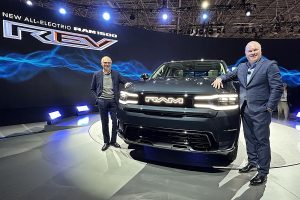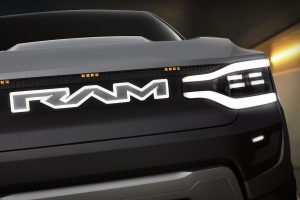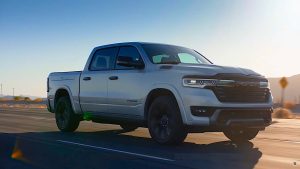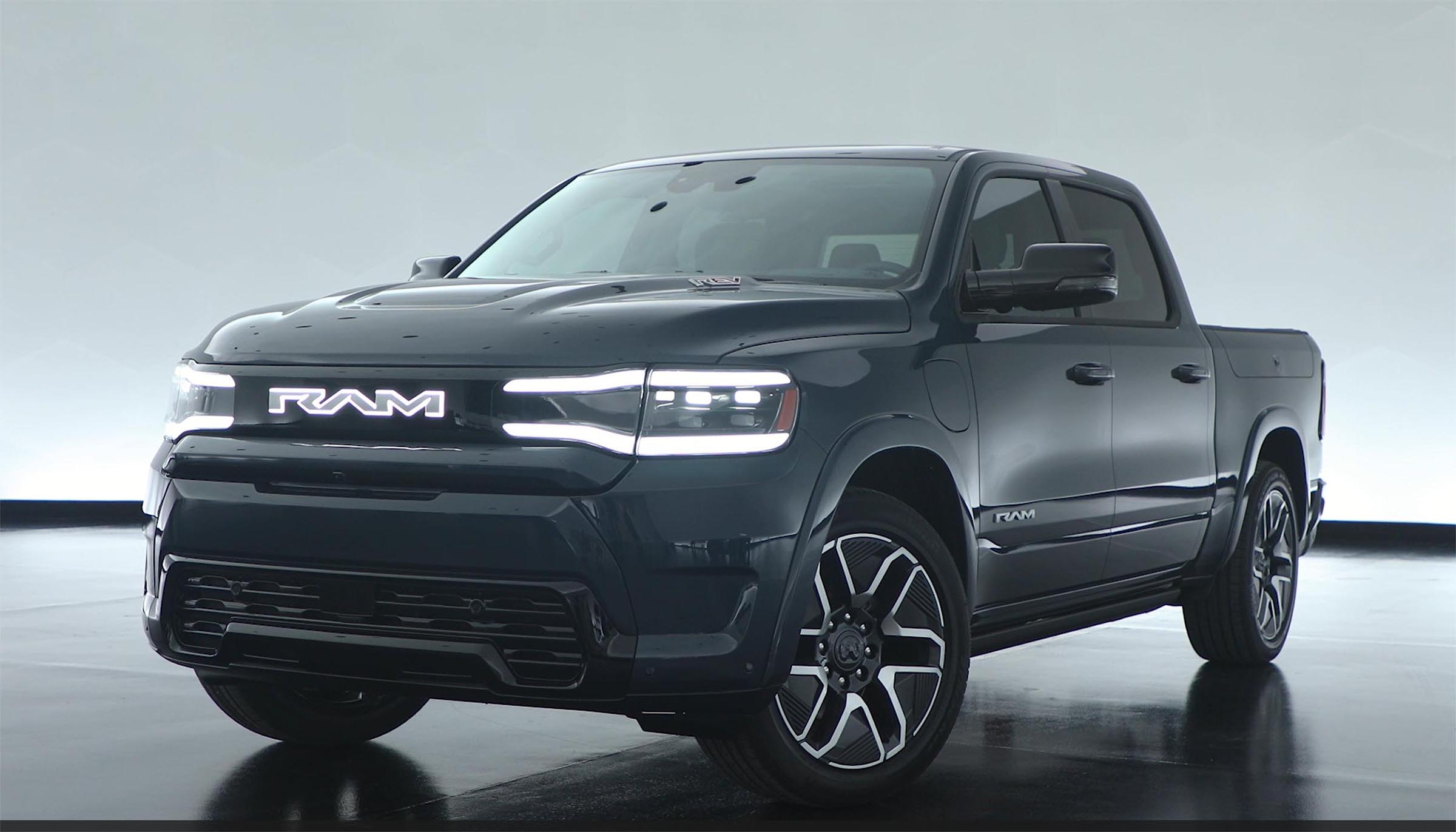After delaying the launch of its Ram 1500 REV pickup, the Stellantis truck brand now has pulled the plug on an extended-range version of the EV that was to have delivered as much as 500 miles per charge. For those who need that much range, the automaker sees buyers more likely to go with the Ramcharger with its gas-electric driveline. More from Headlight.News.

Former Stellantis boss Carlos Tavares with Mike Koval, previous Ram boss, showing off the new Ram 1500 REV at the 2023 NY Auto Show.
Stellantis has scrapped plans to offer two all-electric versions of its Ram 1500 REV pickup, abandoning the longer-range model due to the expected high cost of the battery pack that would be needed to deliver 500 miles of range.
Instead, the Stellantis truck brand will go with a single version of the REV still offering up to 350 miles per charge.
For those who need more range, Ram will offer the Ramcharger package using a smaller battery pack supplemented by a high-efficiency gas engine that will serve as an onboard generator when the batteries start to run down.
Changing plans

The coming year will be a big one for Stellantis from a product standpoint, with models like the Ram 1500 REV coming to market.
The decision to scrap the long-range model, with its 229 kilowatt-hour lithium-ion battery pack, was first reported by Mopar Insiders and subsequently confirmed by Headlight.News which spoke to sources both inside and outside the company, including Sam Fiorani, lead analyst with AutoForecast Solutions – who said having both a model with an extended-range battery pack and one with a range-extending gas motor would have been “redundant.”
It comes as Ram’s parent Stellantis attempts to revise its electrification strategy to adjust to both changing consumer trends and the potential impact of the Trump administration, the new president already issuing an executive order countermanding EV guidelines set by his predecessor, former Pres. Joe Biden. Add internal issues that Stellantis officials have had to deal with, several sources indicated.
The Ram 1500 REV was supposed to reach U.S. dealer showrooms by the end of 2024 but has been pushed back until late 2025 – at the earliest. The current plan calls for the automaker to first go to market with the Ramcharger sometime during the first half of this year.
Changing times

Prior to his June retirement, Kuniskis oversaw both the Dodge and Ram brands, He will focus on Ram this time.
“A couple years ago, when we were developing these trucks, the whole world was in a different space,” Tim Kuniskis, head of the Ram brand, told Automotive News during last week’s Detroit Auto Show.
Kuniskis returned to Ram in December after a 6-month retirement – and following the sudden resignation of Stellantis CEO Carlos Tevares. He made the shift in rollout plans on his first day, December 9th.
“The whole world was saying electrification is going to be the most amazing thing. It’s going to take off, hundreds of thousands of people are going to want these things, and it’s going to be amazing for the truck business. So we’re like, we’re going to make a battery-electric and we’re going to make a great one,” he explained in his interview.
But recent industry data show that growth in the EV market, in general, has slowed from the torrid pace experienced between 2019 and 2023. And demand for electric pickups, in particular, has flattened out. Ford has repeatedly put production on hold at its F-150 Lightning plant in Dearborn, Michigan. Tesla, meanwhile, has transferred workers off the Cybertruck line at its San Antonio Gigafactory as production is cut back.
More EV News
- Cadillac Lyriq V Brings V-Series Performance to an EV
- EV Growth Expected to Continue Despite Pushback from Trump
- Chevrolet’s New Equinox EV May be the Affordable Electric Vehicle the Market Needs
The new plan

The Ram 1500 Ramcharger is a “serial” hybrid. Its gas engine will only serve as a generator to keep its battery pack charged.
Stellantis still sees a market for electrified trucks. It will continue to move forward on a version of the Ram 1500 REV using a 168-kWh battery pack capable of delivering 350 miles per charge under optimum conditions.
But it scrapped plans for an option using the bigger, 229-kWh pack in favor of the Ramcharger.
Like today’s increasingly common plug-in hybrids, this package pairs a modest-sized battery pack with a gas engine. But there’s a difference with Ramcharger. It is what is called a “serial hybrid.” The gas engine functions only as an onboard generator, providing power solely to keep the battery pack charged. None of its torque ever directly powers the truck’s wheels. That is done solely by Ramcharger’s electric motors.
“If you need that much range you’re more likely to go with the range-extended version instead of a much more costly battery,” said Fiorani.
Not only will the Ramcharger be “about $5,000 cheaper” than the long-range Ram 1500 REV, but if you do run out of both battery power and gas, “You’d just need to pull over and fill up the tank.”
Ram is just one of the Stellantis brands planning to introduce range-extending technology. Antonio Filosa, who serves as both the automaker’s North American chief operating officer and Jeep CEO told Headlight.News the off-road brand will add the technology to its mix of powertrains, the first range-extender Jeep likely to reach market sometime in 2026.






0 Comments